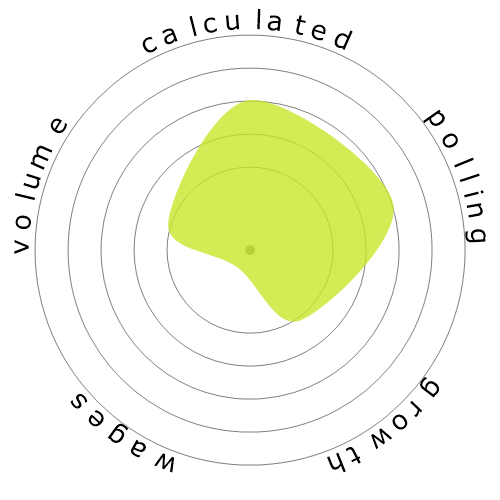Photographers




People also viewed
Calculated automation risk
Low Risk (21-40%): Jobs in this level have a limited risk of automation, as they demand a mix of technical and human-centric skills.
More information on what this score is, and how it is calculated is available here.
User poll
Our visitors have voted there's a low chance this occupation will be automated. This assessment is further supported by the calculated automation risk level, which estimates 34% chance of automation.
What do you think the risk of automation is?
What is the likelihood that Photographers will be replaced by robots or artificial intelligence within the next 20 years?
Sentiment
The following graph is included wherever there is a substantial amount of votes to render meaningful data. These visual representations display user poll results over time, providing a significant indication of sentiment trends.
Sentiment over time (yearly)
Growth
The number of 'Photographers' job openings is expected to rise 3.9% by 2033
Total employment, and estimated job openings
Updated projections are due 09-2025.
Wages
In 2023, the median annual wage for 'Photographers' was $40,760, or $19 per hour
'Photographers' were paid 15.2% lower than the national median wage, which stood at $48,060
Wages over time
Volume
As of 2023 there were 53,630 people employed as 'Photographers' within the United States.
This represents around < 0.001% of the employed workforce across the country
Put another way, around 1 in 2 thousand people are employed as 'Photographers'.
Job description
Photograph people, landscapes, merchandise, or other subjects. May use lighting equipment to enhance a subject's appearance. May use editing software to produce finished images and prints. Includes commercial and industrial photographers, scientific photographers, and photojournalists.
SOC Code: 27-4021.00


Comments
Leave a comment
And yes, I'm a professional photographer, but as Galileo told us, we are not the center of the universe. :-P
For example, a robot could take photos with the correct settings and a cool angle, but a robot could never look at something and realize the true beauty and emotions that a human could feel.
So, a robot might take a photo with the correct ISO, AP, SP, and an angle that it has been programmed to look at. But never emotions because in the end, it's a machine.
AI algorithms are already deeply progressed in combing through google street view to crop and process landscape and urban photography according to classical composition standards. At this point, the primary limiting factor is the sample quality, but much of the principles used will be possible to extend to drones surveying scenic areas.
While the small field of fine art photography will likely be unaffected, the majority of commercial or stock applications of photography are very likely to be done "well enough" by automatization to satisfy the primary customers of the field.
Imagine ball with lenses floating around, then from 100k pictures 100 is selected, based on "rememberability" and other defined patterns trained from famous photographers.
From the little experience I have, I know it takes more than being knowledgeable and aware of the techniques of photography to take a good photo. Sure, it plays a role, but you need to feel emotion from the image to know that it is a good photo.
An AI can't do that.
Leave a reply about this occupation